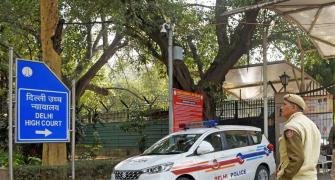Many management institutes now have a case study discussion as part of their selection process instead of the more conventional group discussion, or GD. One of the reasons for this is that a case study is perhaps a better way of assessing a candidate, since everybody is provided with the same information in the form of a case and then they have to analyse it. Your prior knowledge of the topic, therefore, which would be important in a GD, doesn't matter. The focus thus shifts primarily to your ability to analyse the case -- the information given to you.
Examples of a case study
A case study is primarily in the form of a situation given to you. This could be anything -- the case could state that you are the Chief Minister, heading a coalition Government, when some kind of widespread agitation breaks out in the state and badly affects the law and order situation. Your coalition partner supports the agitation and therefore, wants you to agree to the demands of the agitators. How will you handle the situation?
On the other hand, you could be given a case from the world of business, such as the following: You are the marketing manager of a company whose sales have been consistently declining for the past couple of years. Meanwhile, even your sales force is getting de-motivated and therefore, key staff are quitting and joining rival firms. What will you do?
Analysing the problem
The first step in a case study discussion is to understand the problem and more importantly, to separate the problem from its symptoms. For example, in the case where you were supposed to play the role of the marketing manager, it may be that declining sales is actually the symptom of the problem, and not the problem in itself. The real problem could be that the product itself has become obsolete and therefore, no amount of marketing plans would make the consumer buy the product.
Alternative solutions
In a case study, it is necessary to come up with alternate possibilities for action -- do not come up with just one solution. The pros and cons of each possible solution should then be spelt out. This is where the crux of the case study analysis lies -- can you demonstrate an ability to analyse all aspects of the solution that you suggest?
For example, in the case where you were supposed to be marketing manager you could suggest alternatives such as a decrease in price of the product to increase its demand, better packaging, coming up with a catchy advertising campaign, appointing a brand ambassador, refurbishing the product to appeal more to the customer etc.
It is fairly easy to generate alternatives. But then you have to analyse their efficacy -- if you decrease the price, you might indeed increase demand, but what will be the effect of the brand image -- will it suffer a hit?
Recommendations
Having analysed each of the alternatives that came up during the discussion, the group may then try to come up with a final plan or course of action. There are a couple of things to be kept in mind here:
- You might find that there is a short term problem in the case that requires immediate attention (like your staff quitting) and one that can be addressed in the medium/ longer term. In that case, you must clearly spell out the steps that should be taken in the short and medium/ longer term to address the issue.
- Whatever alternative you choose might have certain repurcussions down the line. You must demonstrate an awareness of this and an ability to understand how things are inter-linked and therefore affect each other. For example, the launch of a car like the Nano by the Tatas is likely to affect not only the sales of its competitors, but also the sales of other cars, like the Indica that Tata themselves produce.
Summary
To summarise, remember that a case study is all about analysis, since everybody is given the same information and thus starts from the same base. There are two important things to be done:
- Come up with alternative solutions.
- Analyse the issue properly and the pros and cons of each of the solutions that you are considering.
Siddharth Balakrishna is an MBA from IIM Calcutta and is employed with a management consultancy firm; he is also part of a visiting faculty with MBA coaching centres in New Delhi and can be contacted at bsiddharth_2001@yahoo.co.in.







